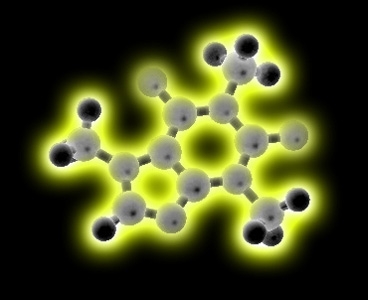MIT Researchers have devised a new technique of detecting if disease markers, explosives, toxins or pathogens are present in materials. The presence of a target chemical is signaled by the emission of a fluorescent glow.
 Molecules of materials glow in presence of toxic chemicals
Molecules of materials glow in presence of toxic chemicals
According to this technique, fluorescent molecules are integrated with open scaffolding known as a metal organic framework (MOF). The structure offers a large amount of space for occupation by target molecules causing them to come near the fluorescent molecules that respond to their occurrence.
The Journal of the American Chemical Society reported the findings in a paper by Mircea Dincã, assistant professor of chemistry, Natalia Shustova, postdoc and Brian McCarthy, undergraduate student. The journal was available online in November and will appear in print soon.
This research will have specific applications in sensors fine-tuned to particular compounds, the detection of which can be observed by just checking if the material glows. According to Dinca, there are a lot of sensors that work the other way round. They turn off when a target compound is present. He said that turn-on sensors are more suitable as they are easier to sense hence the contrast is much better.
Sandia National Laboratory, research scientist, Mark Allendorf stated that the present materials work through luminescence quenching and suffer from minimized detection selectivity and sensitivity.
When the material is adjusted to sense carbon dioxide, the more the gas is present, the more intense the response. It is not the absence or presence of a specific molecule, the system can react to alterations in fluid thickness, for eg. blood that can be an essential detector in diseases like diabetes.
In the novel material, fluorescent molecules such as chromophores are attached onto the metal atoms of the MOF. These chromophores are not capable of emitting light on their own; they become fluorescent when clustered together. However, when in clusters it is not possible for target molecules to reach them hence they cannot emit light. The chromophores are attached to MOF’s open framework nodes in order to avoid clustering and at the same time keeping them near the empty pores in order to react easily to a target molecule arrival.
The work was assisted by MIT’s Center for Excitonics, an Energy Frontier Research Center financed by the National Science Foundation and the U.S. Department of Energy, and by the National Science Foundation.